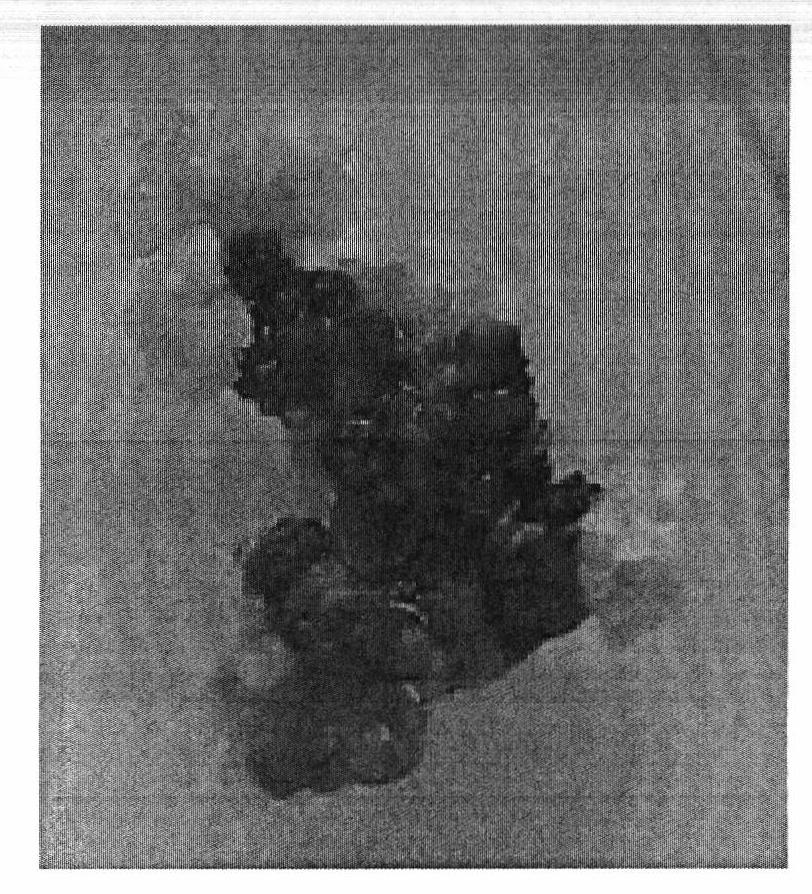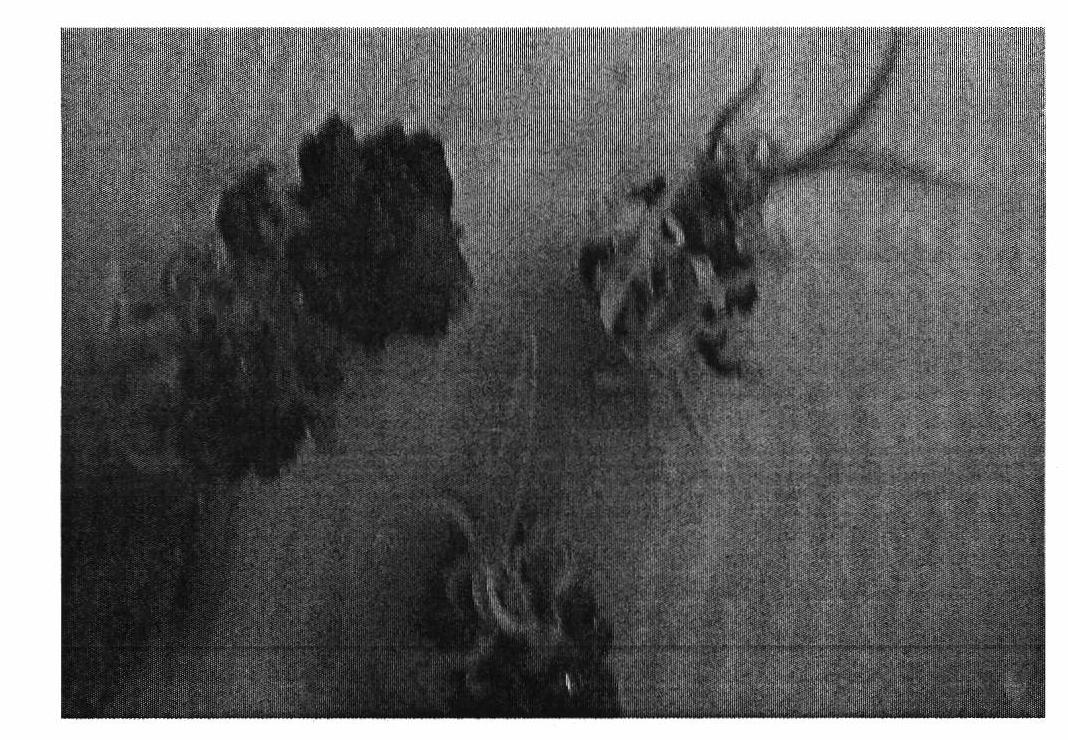Method for agrobacterium tumefaciens-mediated genetic transformation of sugarcane
A genetic transformation method and technology of Agrobacterium tumefaciens is applied in the field of sugarcane genetic transformation mediated by Agrobacterium tumefaciens to achieve the effects of increasing quantity, improving efficiency and good dispersion.
- Summary
- Abstract
- Description
- Claims
- Application Information
AI Technical Summary
Problems solved by technology
Method used
Image
Examples
Embodiment 1
[0028] Example 1 Preparation of embryogenic callus
[0029] Choose the plant tail tip of No. 25 sugarcane variety Taitang, which grows robustly, disinfect the surface with 70% ethanol, get the young leaf tissue about 10 cm away from the top growth point as explants, and cut it into 0.1-0.2 cm thick Thin slices were inoculated on embryogenic callus induction medium MS+2,4-D 2mg / L, cultured in the dark at 26°C-28°C for 40 days, the leaves were covered with white dense callus, and type I embryogenic callus.
[0030] Pick the primary embryogenic callus and insert it into the embryogenic callus medium MS+2,4-D1mg / L for subculture, culture in the dark at 26°C-28°C, subculture once every 20-30 days; These embryogenic callus further induced a large number of shiny, light yellow, well-dispersed and loose type II embryogenic callus.
Embodiment 2
[0031] Embodiment 2 preparation of embryogenic callus
[0032] Choose the plant tail tip of No. 25 sugarcane variety Taitang, which grows robustly, disinfect the surface with 70% ethanol, take the young leaf tissue about 10 cm away from the top growth point as explants, and cut it into 0.1-0.2 cm thick Thin slices were inoculated on embryogenic callus induction medium MS+2,4-D 3mg / L, cultured in the dark at 26°C to 28°C for 20 days, the leaves were covered with white dense callus, and type I embryogenic callus.
[0033] Pick the primary callus and insert it into the embryogenic callus medium MS+2,4-D 1mg / L for subculture, culture in the dark at 26°C-28°C, subculture once every 20-30 days; The embryogenic callus further induced a large amount of lustrous, light yellow, loose type II embryogenic callus with good dispersion.
Embodiment 3
[0034] Example 3 Antibiotic Screening
[0035] Callus subculture stage: set six gradient concentrations (0, 10.0, 20.0, 30.0, 40.0, 50.0 mg / L) of hygromycin (Hyg). Choose the type II embryogenic callus (approximately 1 cm in size) prepared in vigorous growth Example 1 2 ) as the experimental material, inoculated on the subculture medium MS+2,4-D1.0 mg / L containing hygromycin, cultured in the dark at 26°C to 28°C, and transferred once every 20 days Fresh culture medium, inoculate 5 culture dishes for each concentration, pick up 10 pieces of material in each dish, observe the test results every 10 days, record the growth of callus, and count the results after 40 days. The mass concentration of Hyg was determined according to the growth of the callus.
[0036] Adventitious bud differentiation culture stage: set six gradient concentrations of hygromycin (Hyg) (0, 10.0, 20.0, 30.0, 40.0, 50.0 mg / L). Choose the type II embryogenic callus (about 1 cm in size) prepared by the vigor...
PUM
 Login to View More
Login to View More Abstract
Description
Claims
Application Information
 Login to View More
Login to View More - R&D
- Intellectual Property
- Life Sciences
- Materials
- Tech Scout
- Unparalleled Data Quality
- Higher Quality Content
- 60% Fewer Hallucinations
Browse by: Latest US Patents, China's latest patents, Technical Efficacy Thesaurus, Application Domain, Technology Topic, Popular Technical Reports.
© 2025 PatSnap. All rights reserved.Legal|Privacy policy|Modern Slavery Act Transparency Statement|Sitemap|About US| Contact US: help@patsnap.com



